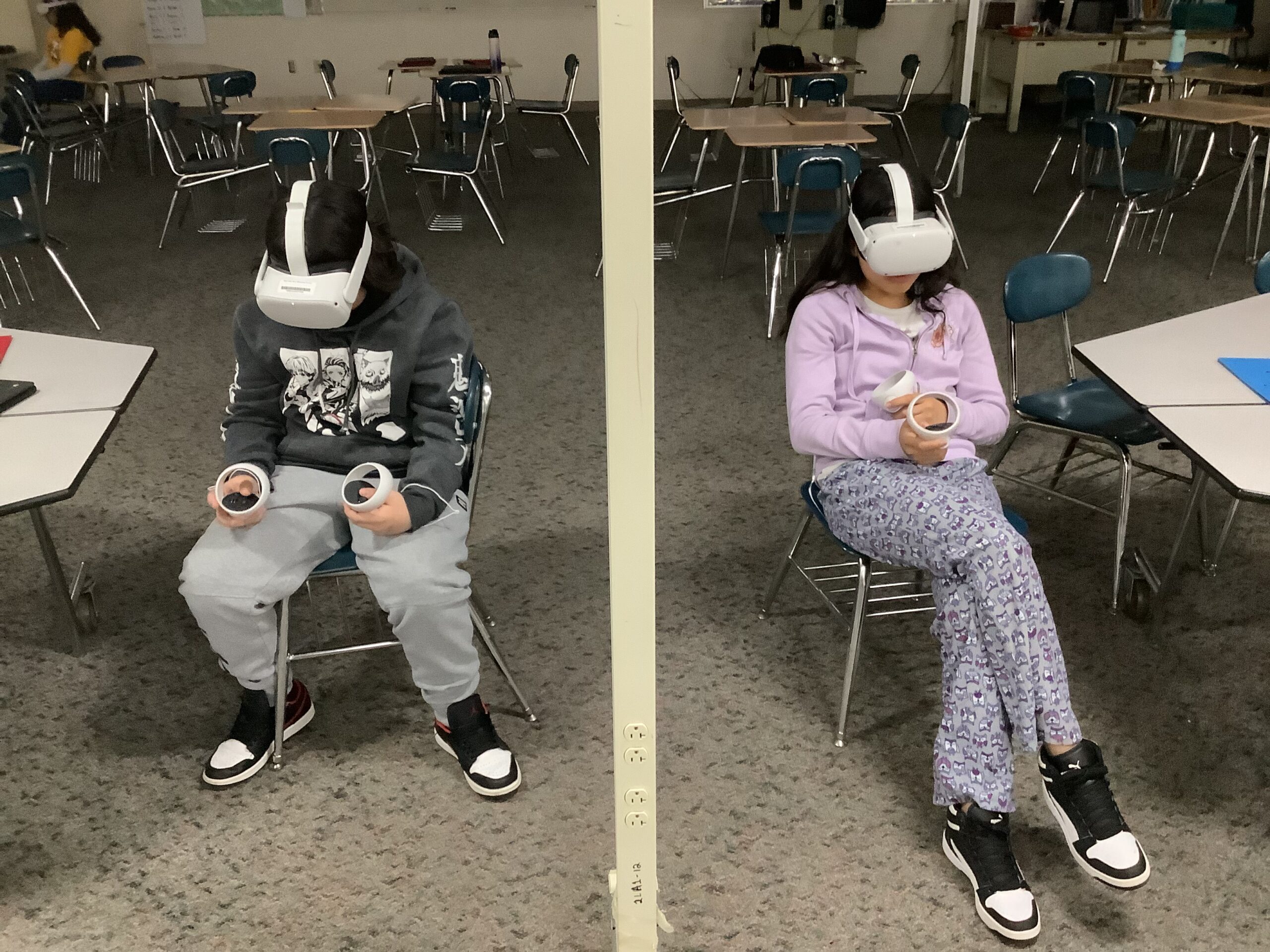
VR Makes Lightbulb Moments Possible by Creating Opportunities to Engage with Abstract Concepts
Traditional teaching methods, while foundational, often rely too heavily on passive learning. It can leave students disengaged, which is a huge barrier to understanding complex concepts. Information is conveyed, but not necessarily received. That’s why Virtual Reality instruction is becoming a key tool in helping students tackle complex concepts. With tangible, interactive experiences, ideas come to life with stunning visuals and total immersion, making learning informative and engaging.
Bridging abstract ideas with concrete understanding is a challenge for many classrooms. Teachers have to meet students where they are, provide a solid foundation of knowledge, and then gradually layer in complexity. VR education is perfect for this type of scaffolding. It creates learning experiences that are so real and immediate that they become unforgettable. VR gets students to have those highly sought-after lightbulb moments.
Lightbulb moments are so visceral and obvious to educators that their absence is equally palpable. The class is quiet, their minds are far away, and their decisions are made—they will not listen anymore. VR counters this by making abstract concepts accessible and engaging. It keeps students mentally present and eager to learn.

Use SAMR to Help Redefine The Way Students Use Technology to Learn
The real magic happens when classrooms move to the upper levels of the SAMR model:
Modification, where technology allows for significant task redesign.
For example, students in a physics class can use VR headsets to collaborate on designs and test virtual roller coasters from different locations. Instead of drawing roller coasters in 2D, students apply real-world physics principles and visualize the effects of changes in speed and mass in real time. Then they get to actually enjoy the ride.
Redefinition, where technology enables new tasks that were previously inconceivable.
Imagine students using VR to make their own simulations of historical events or scientific theories. They're creating immersive experiences that simply were not possible before. Instead of talking or writing about it, they create it and live it.
Technologies like VR can take learning to the Modification and Redefinition stages. With VR, students get hands-on experience with complex ideas, which helps them understand the subject matter better. This innovative approach changes how students learn and retain information, ultimately leading to more successful academic outcomes.
Get More 'Aha' Moments: How VR Education Helps Students Go More In-Depth
Two students created a VR experience showing the individual actions people can take against the climate crisis by supporting green businesses. They created a VR game set in a neighborhood where users interact with various elements that signify the negative impacts of climate change and the benefits of using clean energy.
What were students' lightbulb moments?
- Understanding Solar Energy's Economic Viability
Both students spoke with a UN member about the costs of transitioning to solar energy. This discussion led to a significant revelation: "Over the last few years, the cost of solar energy has dropped by 90%." They further learned that costs are estimated to decrease by another 20% by 2030. This information underlined the growing economic feasibility of adopting cleaner energy solutions.
- Recognizing the Immediate Impact of the Climate Crisis
Initially, both students saw climate change as an issue for future generations. However, during the project, they learned about its immediate effects on natural disasters and disproportionately on poorer communities. One student shared, "I used to think the climate crisis affects only the future generations. But that actually affects today's generations as well, too [because] it worsens natural disasters. That's something I never knew before this deep dive, and I'll never forget it. It also affects the poor communities more than the richer communities. And that's such an unfair problem that needs to be fixed." This shift reflects a deeper understanding of the widespread and current impact of the climate crisis. But not only that, their agency in researching and creating their VR project led them to become more empathetic and global citizens.
- Learning the Efficiency of Collaborative Design
The students also reflected on the design process they used during their project, noting it as a highly productive and educational experience. They valued the collaborative approach, emphasizing "the way we worked on our deep dive. I just felt that it was so productive, and you know, we made good use of our time and learned a lot."
VR served as the catalyst for these students to gain powerful visualizations and understandings of something as abstract as climate change. One of the most significant challenges in education is getting students to see things outside their periphery. With VR headsets, these students could tangibly grasp and then deliver the impact of climate change in a game they created. While there's nothing wrong with writing a traditional essay on the effects of climate change, consider the steps these students took to support their VR simulation. They researched the climate crisis, spoke to a UN representative, and found practical solutions to use in homes. Then, they made it into an interactive game. Their approach gave them a profound understanding of broader issues and solutions related to climate action. Immersive learning methods like VR can make complex issues like climate change more accessible to grasp and inspire real understanding and action.

How VR Education Breaks the Rules (In a Good Way)
VR in education helps students break the rules of how they think they are supposed to learn; students experience learning rather than receive it; creating "firsthand" experiences of geographically and spatially distant scenarios makes things all the more real for students. Students witness abstract concepts, like the effects of climate change in different parts of the world or even potential future scenarios. This goes a long way in engaging students with topics that may not seem relevant to their daily lives.
VR headsets challenge students to think critically and creatively. It builds more than an experience that's novel for students. It builds their empathy, leadership, and problem-solving skills, where abstract concepts become accessible and engaging, and students experience more 'aha' moments.
Zoe Immersive makes VR an accessible tool for classroom learning. With its intuitive interface and no coding needed, Zoe empowers students to build worlds where abstract concepts become concrete experiences. Students step through the looking glass and into a world where learning isn't merely seen and heard but felt and created. Zoe brings these scenarios to life and helps teachers push their students to not cower from complex ideas but to go all-in with the hard stuff, in ways they never thought possible.
Are you ready to make learning more than just memorizing? Turn abstract ideas into something your students can actually experience. Book a demo and see how VR can change the usual sit-and-listen into a movement-made adventure. Help your students grasp those hard-to-reach concepts by creating their own immersive projects. Schedule your demo now.
